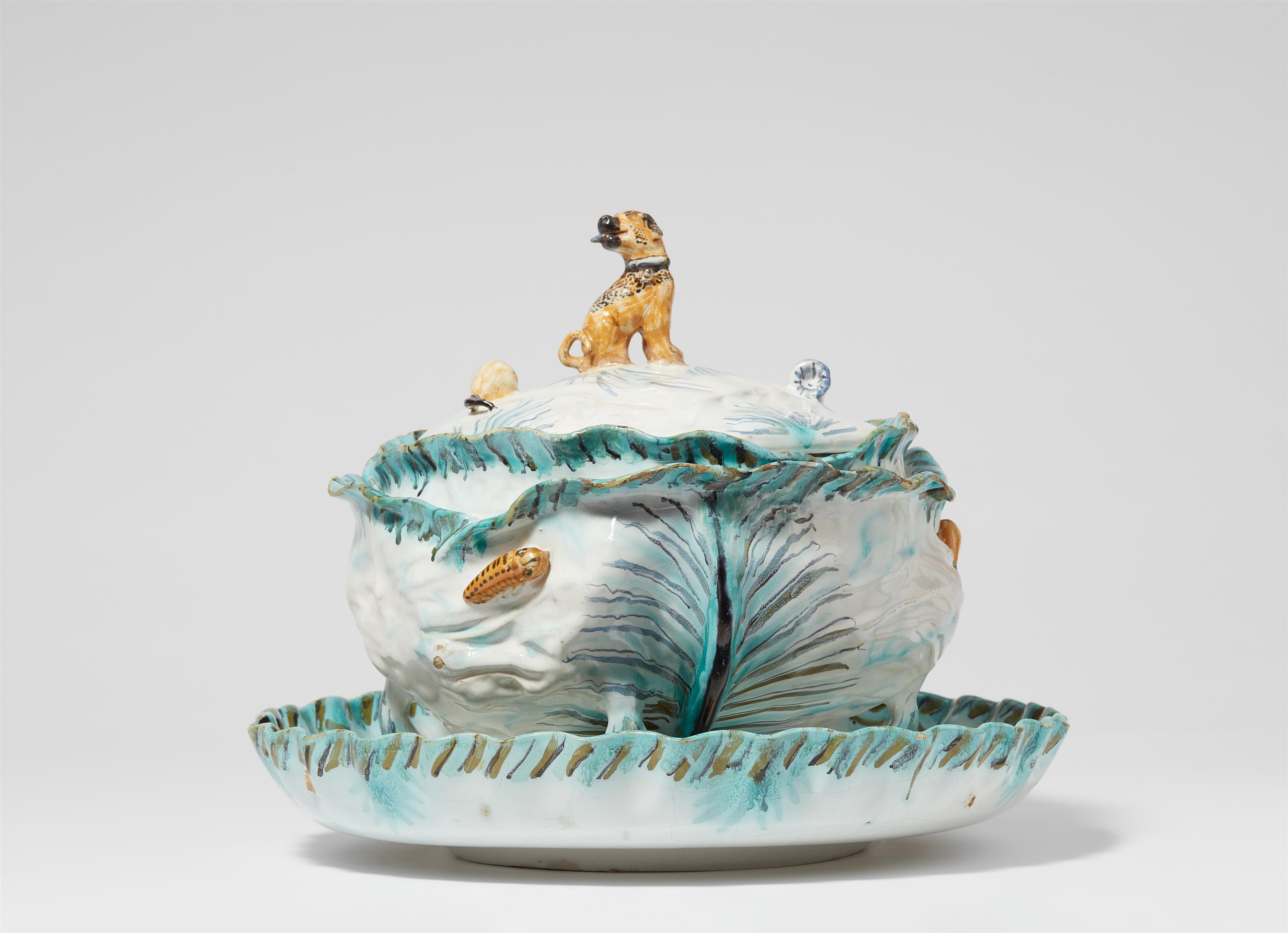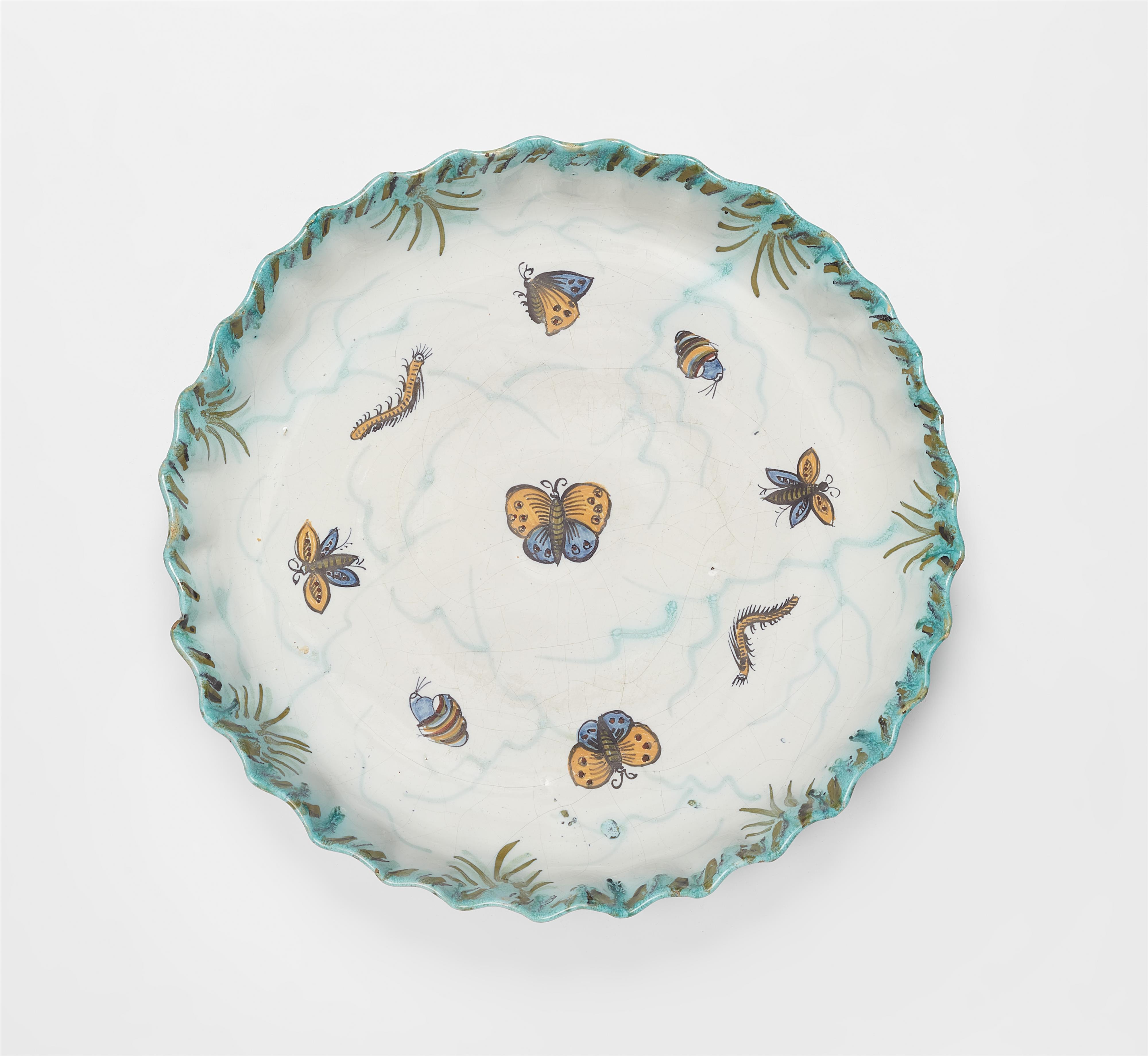A Brussels 'vert du cuivre' faience cabbage tureen on stand
Naturalistically modelled as a cabbage applied with caterpillars, fruit and a flower. Associated lid with a Fo-dog as finial. The stand painted with insects. Remnants of gilding. Unmarked. The glaze crazed, a restored breakage through the lid, the dog reattached, partially restored glaze chips on the rims. Tureen H 25, D 25 cm, stand D 33 cm.
Manufactory of Philippe Mombaers or Manufactory of Jacques Artoisenet, mid-18th C.
In 1705, the potter Cornelis Mombaers, together with his Dutch partner Dirck Witsemburgh, opened a faience factory in the Rue de Laeken in Brussels. The events of the War of the Spanish Succession (1701-1714) put an end to the initially flourishing business, and Mombaers had to declare bankruptcy.
In 1724, Cornelis' son, Philippe Mombaers, re-founded the factory. Philippe had served an apprenticeship with his father, but then went to the great pottery centres in Delft, Rouen and Nevers to learn about technical innovations, colours and models. This knowledge helped him to build up his manufactory. Jacques Artoisenet, Philippe's son-in-law, worked under Philippe Mombaers for several years, but left him in 1751 to set up his own factory called "Moriaen" in the Rue de la Montagne. There is little difference between the products of the two companies, as Artoisenet copied the shapes and also the colours of Philippe Mombaers exactly.
Provenance
The Schmitz-Eichhoff Collection.
Private collection, Rhineland.
Literature
Cf. Köllmann, Sammlung europäischer Fayence des 17.-19. Jahrhunderts, Cologne 1991, no. 1.
Cf. Lemaire (ed.), Faïence et Porcelaine de Bruxelles, Bruxelles 2003, p. 36 ff.




